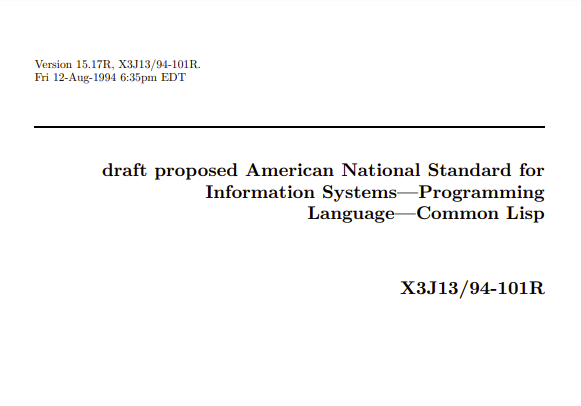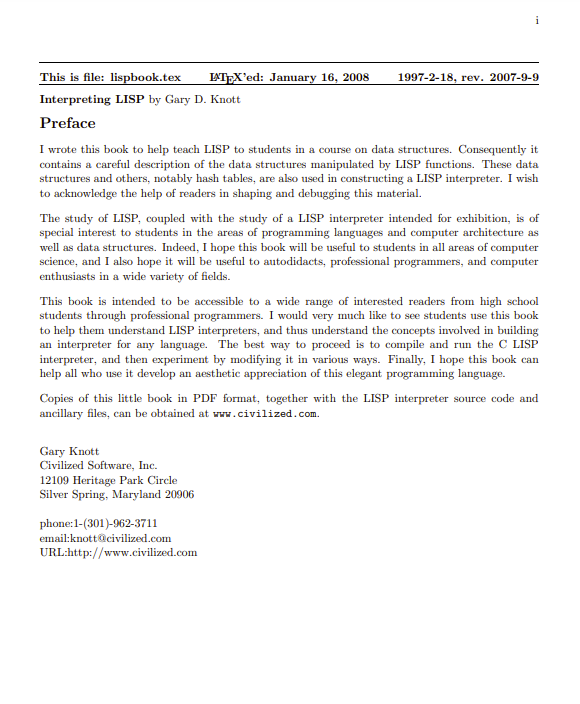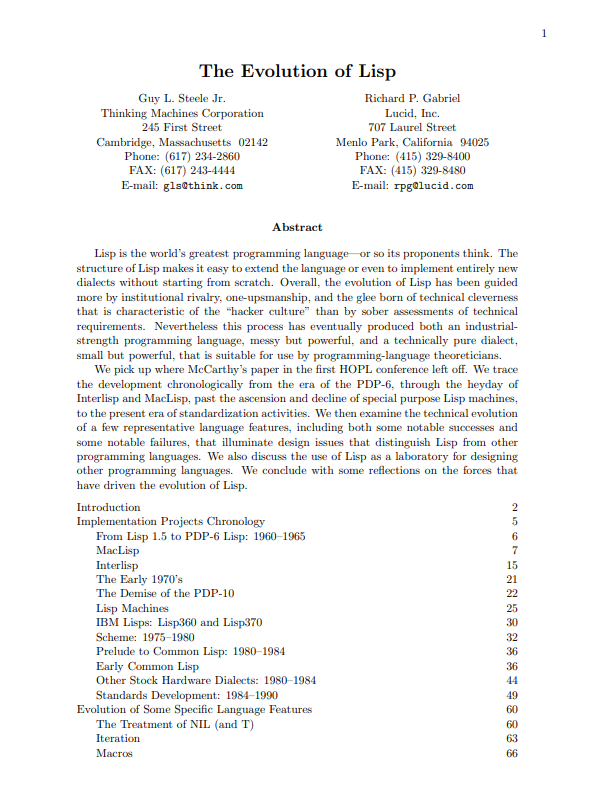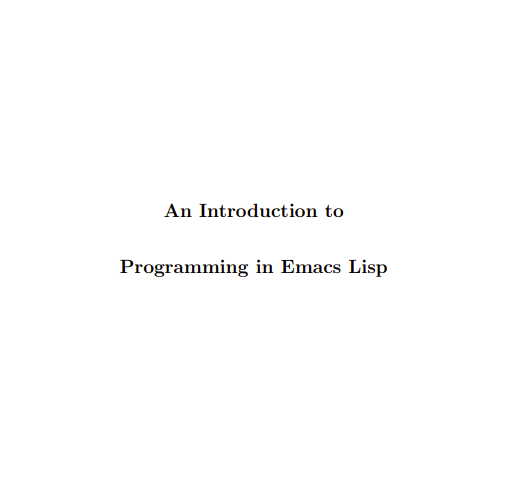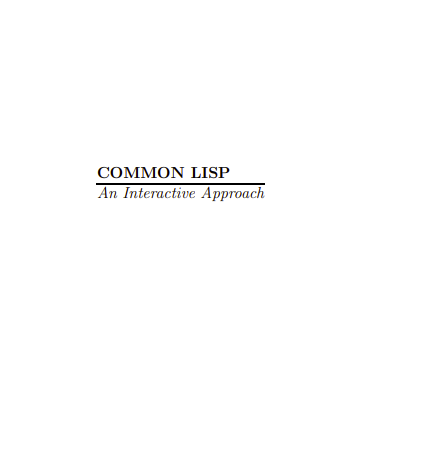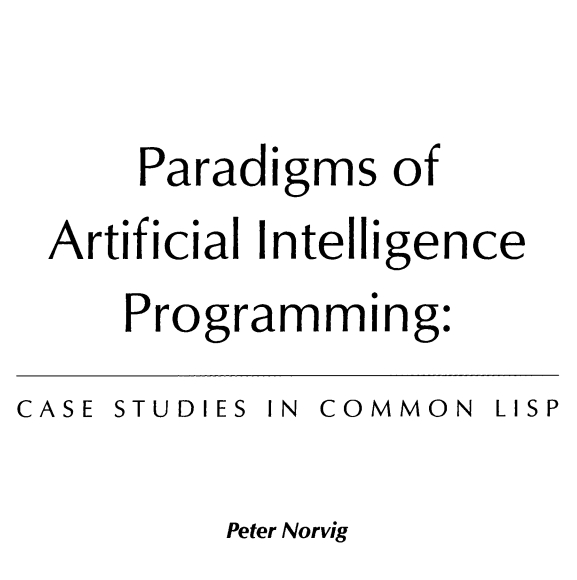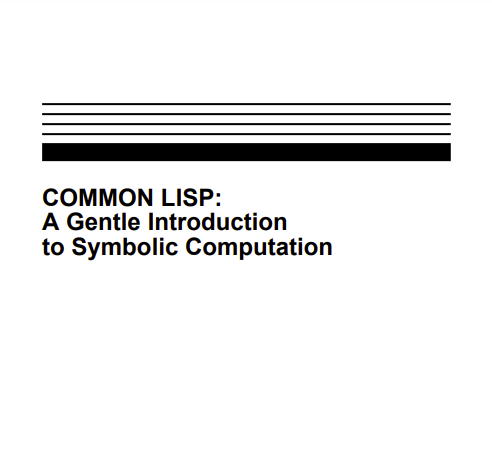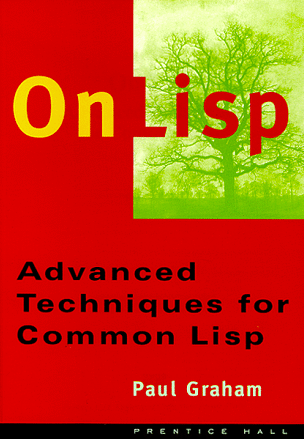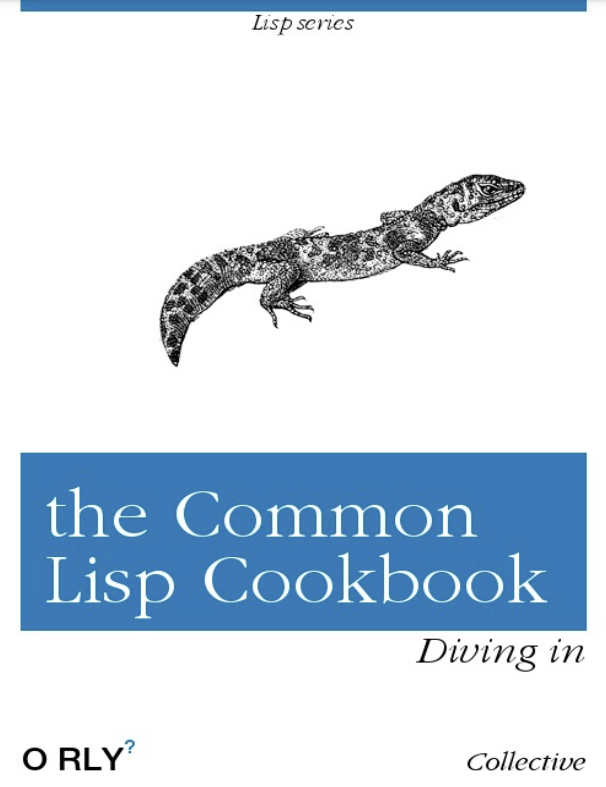Scope and Purpose
The specification set forth in this document is designed to promote the portability of Common Lisp programs among a variety of data processing systems. It is a language specification aimed at an audience of implementors and knowledgeable programmers. It is neither a tutorial nor an implementation guide.
History
Lisp is a family of languages with a long history. Early key ideas in Lisp were developed by John McCarthy during the 1956 Dartmouth Summer Research Project on Artificial Intelligence. McCarthy’s motivation was to develop an algebraic list-processing language for artificial intelligence work. Implementation efforts for early dialects of Lisp were undertaken on the IBM 704, the IBM 7090, the Digital Equipment Corporation (DEC) PDP-1, the DEC PDP-6, and the PDP-10. The primary dialect of Lisp between 1960 and 1965 was Lisp 1.5. By the early 1970’s there were two predominant dialects of Lisp, both arising from these early efforts: MacLisp and Interlisp. For further information about very early Lisp dialects, see The Anatomy of Lisp or Lisp 1.5 Programmer’s Manual.
MacLisp improved on the Lisp 1.5 notion of special variables and error handling. MacLisp also introduced the concept of functions that could take a variable number of arguments, macros, arrays, non-local dynamic exits, fast arithmetic, the first good Lisp compiler, and an emphasis on execution speed. By the end of the 1970’s, MacLisp was in use at over 50 sites. For further information about Maclisp, see Maclisp Reference Manual, Revision 0, or The Revised Maclisp Manual.
Interlisp introduced many ideas into Lisp programming environments and methodology. One of the Interlisp ideas that influenced Common Lisp was an iteration construct implemented by Warren Teitelman that inspired the loop macro used both on the Lisp Machines and in MacLisp, and now in Common Lisp. For further information about Interlisp, see Interlisp Reference Manual.
Although the first implementations of Lisp were on the IBM 704 and the IBM 7090, later work focussed on the DEC PDP-6 and, later, PDP-10 computers, the latter being the mainstay of Lisp and artificial intelligence work at such places as the Massachusetts Institute of Technology (MIT), Stanford University, and Carnegie Mellon University (CMU) from the mid-1960’s through much of the 1970’s. The PDP-10 computer and its predecessor the PDP-6 computer were, by design, especially well-suited to Lisp because they had 36-bit words and 18-bit addresses. This architecture allowed a cons cell to be stored in one word; single instructions could extract the car and cdr parts. The PDP-6 and PDP-10 had fast, powerful stack instructions that enabled fast function calling. But the limitations of the PDP-10 were evident by 1973: it supported a small number of researchers using Lisp, and the small, 18-bit address space (2 18 = 262,144 words) limited the size of a single program. One response to the address space problem was the Lisp Machine, a special-purpose computer designed to run Lisp programs. The other response was to use general-purpose computers with address spaces larger than 18 bits, such as the DEC VAX and the S-1 Mark IIA. For further information about S-1 Common Lisp, see “S-1 Common Lisp Implementation.”
The Lisp machine concept was developed in the late 1960’s. In the early 1970’s, Peter Deutsch, working with Daniel Bobrow, implemented a Lisp on the Alto, a single-user minicomputer, using microcode to interpret a byte-code implementation language. Shortly thereafter, Richard Greenblatt began work on a different hardware and instruction set design at MIT. Although the Alto was not a total success as a Lisp machine, a dialect of Interlisp known as Interlisp-D became available on the D-series machines manufactured by Xerox—the Dorado, Dandelion, Dandetiger, and Dove (or Daybreak). An upward-compatible extension of MacLisp called Lisp Machine Lisp became available on the early MIT Lisp Machines. Commercial Lisp machines from Xerox, Lisp Machines (LMI), and Symbolics were on the market by 1981. For further information about Lisp Machine Lisp, see Lisp Machine Manual.
